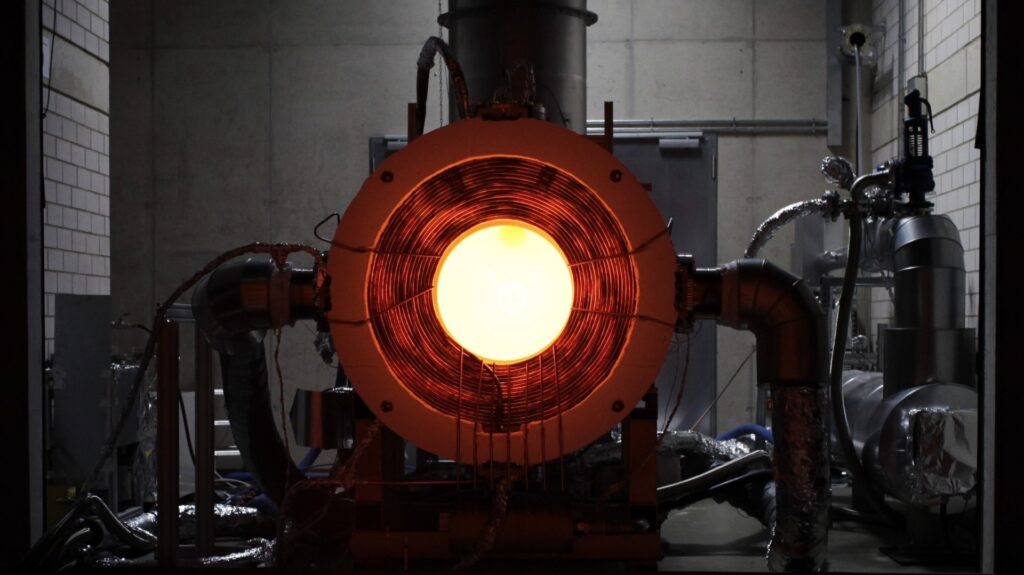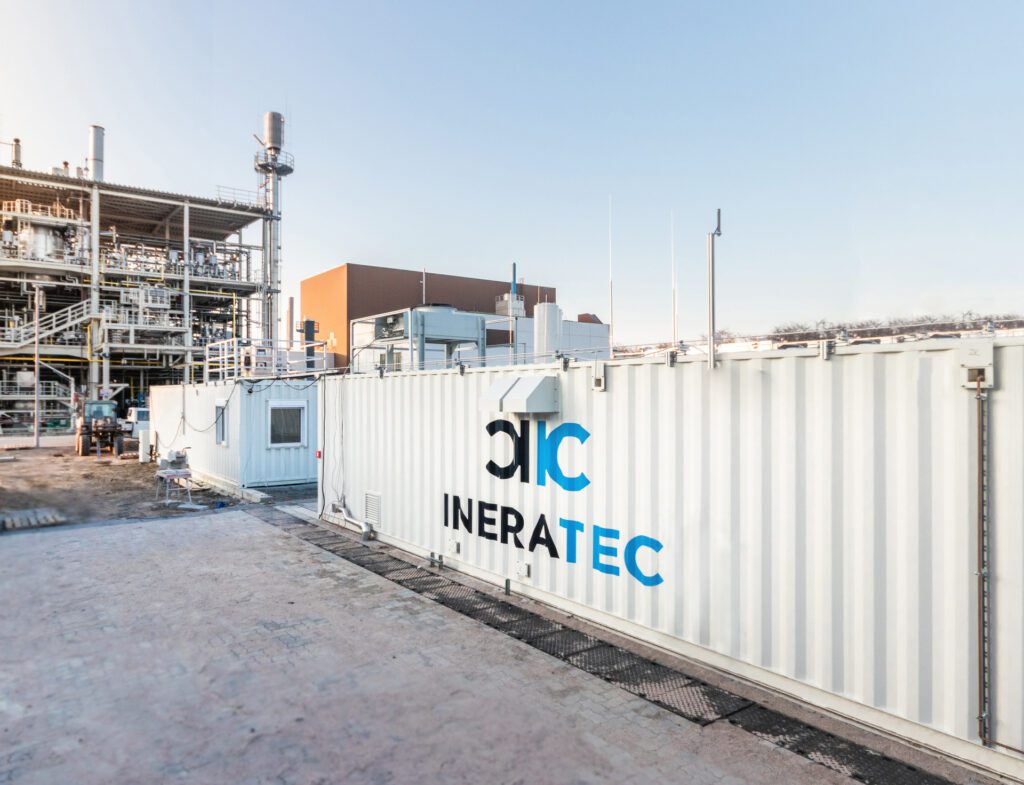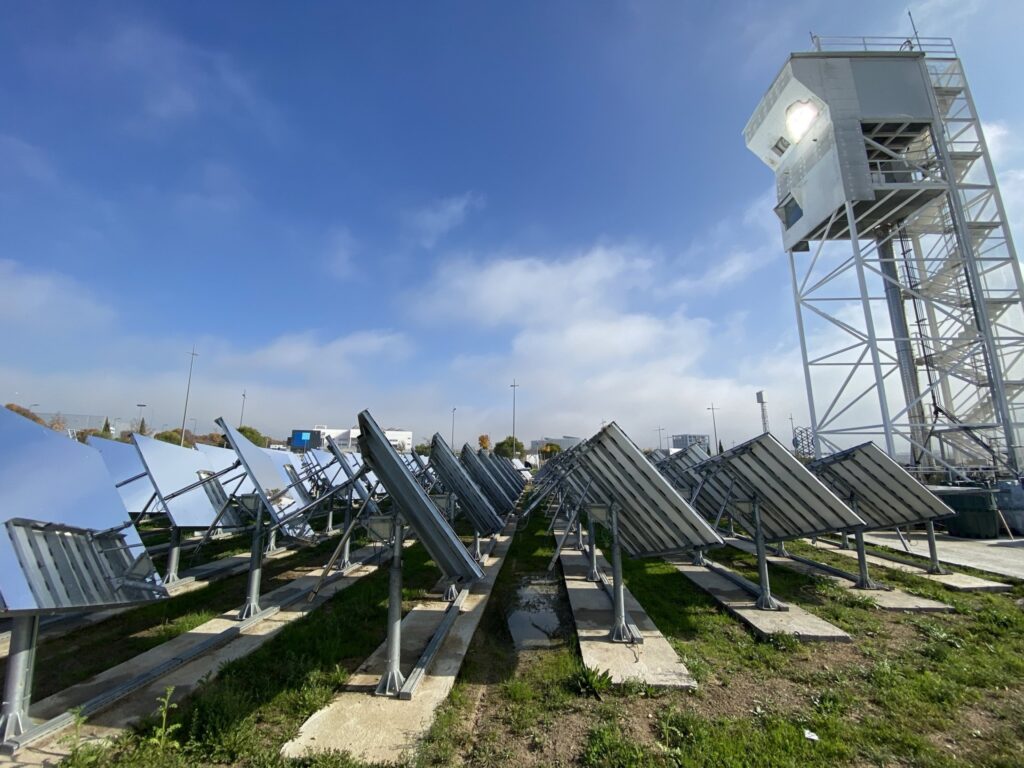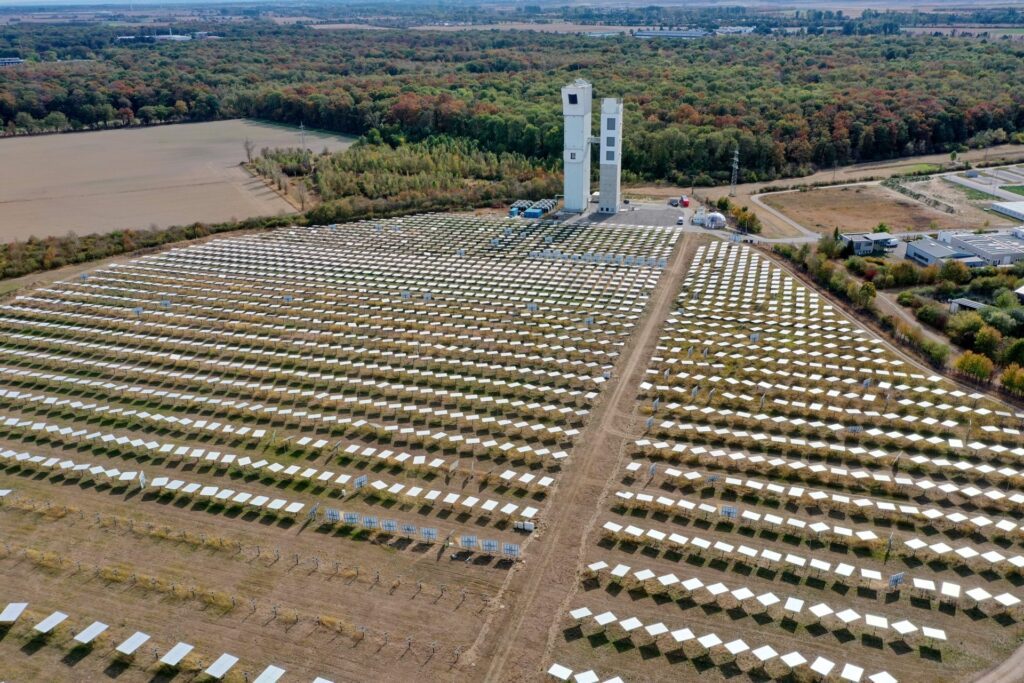Swiss International Air Lines Plans to be First in the World to Use Solar Jet Fuel


The company Synhelion has selected Swiss International Air Lines (SWISS) as the first to use its solar aviation fuel. (Photo courtesy of Synhelion)
In a strategic collaboration with solar technology developer Synhelion, Swiss International Air Lines (SWISS) and parent company the Lufthansa Group have partnered to bring solar aviation fuel to market and enable SWISS to become the world’s first airline to use solar kerosene. SWISS and the Lufthansa Group coordinated to develop a strategy for bringing Synhelion’s solar kerosene to market. The fuel is carbon-neutral and is made using concentrated sunlight.
This week, Synhelion’s team announced that they will collaborate with the German company INERATEC to combine their technologies and accelerate solar fuel production. INERATEC’s modular synthesis plant will be used to transform syngas into liquid fuels by way of the Fischer-Tropsch process. Both companies offer technologies that are modular and this collaboration will help to demonstrate that producing solar fuels is profitable and scalable.

“Joining forces with Synhelion shows what can be achieved when partners who share the same vision collaborate. Together, we’re producing sustainable fuel to make transportation more climate friendly. We’re looking forward to demonstrating the production of sustainable fuels at scale.” – Tim Böltken, Managing Director and Founder of INERATEC (Photo courtesy of INERATEC)
Carmen Murer of Synhelion gave an in-depth look at the company’s progress and what’s coming up next in an interview with Avionics. Murer, the company’s head of corporate communications, explained the basic idea of creating solar aviation fuel: “We use solar heat directly to drive the thermochemical processes to produce syngas. Syngas is a mix of carbon monoxide and hydrogen [H2 and CO], which can then be processed into jet fuel.”
The team plans to start production of the solar fuel in 2023, and their first industrial-scale plant is currently being built in North Rhine-Westphalia, Germany. It is a demonstration plant, not a commercial one, said Murer, “but it will be the first time that we are really producing fuel at a large-scale plant.” The plant in Germany will serve to demonstrate the potential of Synhelion’s process of transforming concentrated sunlight into liquid fuel for powering airplanes. “Germany is not the ideal location when it comes to solar radiation,” she added, “but the circumstances are ideal to build this plant very quickly to show that the technology works.”

Synhelion’s technology converts concentrated solar heat into the hottest existing process heat on the market, making it possible to drive an unprecedented number of industrial processes such as fuel production and cement manufacturing with solar heat. (Synhelion)
The next plant that Synhelion plans to build will be located in Spain, which is a more ideal location in terms of the sunlight it receives. The plant in Spain will be the company’s first commercial facility, and it could begin production of solar fuel as soon as 2025. Estimated production capacity per year at this commercial plant would be about 500,000 liters of fuel.
By 2030, the company hopes to scale up to production of 875 million liters of fuel per year. “Globally speaking, that’s still a drop in the bucket,” Murer said in mentioning the high levels of fuel consumed by global aviation. However, she explained, if you consider that level of fuel production for one region such as Switzerland, that 875 million liters would cover half of the country’s annual demand for jet fuel. Looking even further ahead to 2040, Synhelion aims to produce 50 billion liters of solar fuel annually.
A key distinguishing feature of Synhelion is what they call the “sun-to-liquid” process as opposed to a “power-to-liquid” process for creating fuel. Murer remarked, “We have a very direct approach with few conversion steps because we use solar heat directly. Solar heat is a very abundant resource, and a big advantage of working with solar heat is that it is storable—we can use it 24 hours a day and produce fuel all day long, which is very important for production of synthetic fuels. With an industrial production facility, you cannot switch it on and off on a daily basis; you want to run it continuously.”
“Our setup is standalone, so all the energy that we need is produced onsite. We don’t have to be connected to an existing energy grid, and we don’t have to wait for renewable electricity capacities to ramp up. We can scale more or less independently.”

“Our involvement with Synhelion is a key element in our long-term sustainability strategy.” – SWISS CEO Dieter Vranckx (Photo: Synhelion)
In the company’s announcement, Synhelion CEO and co-founder Dr. Philipp Furler commented on the aviation industry’s interest in sustainable aviation fuels and, in particular, solar fuel. “Our next-generation carbon-neutral solar kerosene is an economically and ecologically viable substitute for fossil fuels,” he remarked. “We believe in a globalized world connected by climate-friendly mobility.”
CEO of SWISS, Dieter Vranckx, looks forward to the opportunity to enable use of solar fuel in regular flight operations in coordination with Synhelion. “We are proud that SWISS will be the first airline in the world to fly with solar kerosene. In partnering with Synhelion, we are supporting Swiss innovation and are actively pursuing and promoting the development, the market introduction and the scaling-up of this highly promising technology for producing sustainable fuels.”
Research and development of sustainable aviation fuel (SAF) have only been ramping up as of late. The company Pratt & Whitney was awarded a project to develop hydrogen propulsion technology by the U.S. Department of Energy last month. Rather than using solar heat, the technology will take advantage of liquid hydrogen combustion and water vapor recovery.
Safran Helicopter Engines and Bell Textron are also prioritizing research into SAF. The two companies recently announced a new collaboration to test the performance of SAF as well as the economic impacts of using it to power the Bell 505 helicopter. The team at Safran hopes to enable use of 100% SAF for helicopter engines in the near future.
The post Swiss International Air Lines Plans to be First in the World to Use Solar Jet Fuel appeared first on Aviation Today.
—————
Boost Internet Speed–
Free Business Hosting–
Free Email Account–
Dropcatch–
Free Secure Email–
Secure Email–
Cheap VOIP Calls–
Free Hosting–
Boost Inflight Wifi–
Premium Domains–
Free Domains





